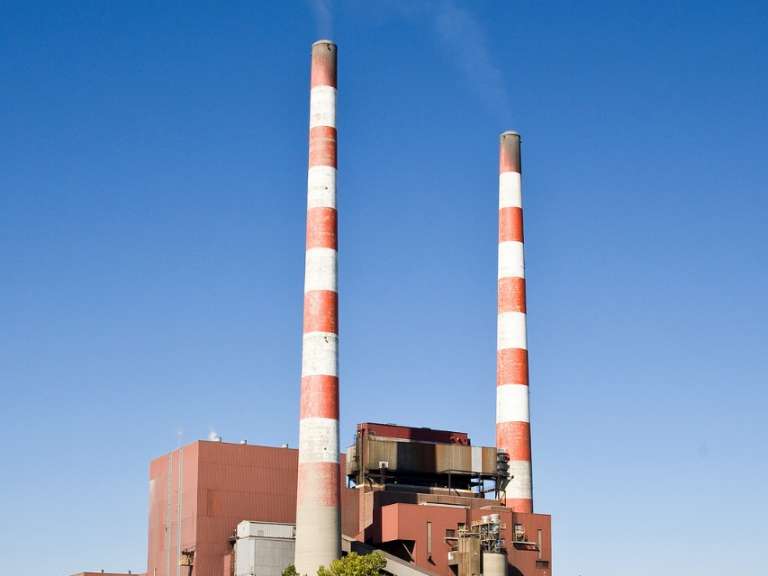The global community is trending inexorably toward low-carbon fuel sources, and the move by more and more utilities to use renewable energy is an indicator of that. However, wind and solar energy, for example, are considered intermittent; therefore, back-up power must be ready when called upon.
Revving up
A recent study by GE Power finds that existing fossil fuel plants can be equipped with the latest hardware and software to answer that call. Using those latest technologies, the company says that carbon emissions from coal and natural gas plants could be reduced by 11 percent—the equivalent of removing 95 percent of cars from US roads.
The study states that "the existing fleet is an important facilitator of system change, one that will be a bridge to the future, and their contributions should be recognized to support this transformation." It continues: "In fact, they play a critical role in improving system efficiency and flexibility; and investing to modernize fossil power plants provides the best insurance to secure profitable ongoing operations . . . there are immediate opportunities for electricity producers to take advantage of these technologies to improve business performance."
The European Union, comprising 30 countries that support the Paris climate accord, is listening. The European Commission has said that 27 percent of all energy consumed on the continent must come from renewables by 2030. However, that renewable power generation must be supported by baseload generation that can rev up on a moment's notice and run around the clock, if necessary.
That's the essence behind the digital power revolution. Today, machines are interconnected, driven by data that is collected and centrally stored. The result is new efficiency that drives greater productivity, increasing the value of key assets and enhancing their performance.
It's all tied to the Industrial Internet, which analyzes tens of thousands of data points every second, and in so doing drives higher output. For the power sector and its customers, the Industrial Internet makes grid operations more efficient–avoiding congestion and possible brownouts while also reducing emissions. Making use of existing fossil fuel plants can fit into this initiative.
What this ultimately means is that the electrical grid can run more efficiently, giving it more space to transport wind and solar electrons, which then meets the requirements of not just the European Commission but any governing body that necessitates more renewable fuels. Stated differently, grid operators are better equipped to handle the intermittency of wind and solar energies, enabling them to remain reliable and cost effective.
"It is tempting to think of fossil-fueled plants as a casualty of the energy system transformation, resulting in minimized investment as it embarks on a glide path towards closure," says the study. However, the study continues: "It is almost impossible to simply switch off existing power generation assets and turn on renewable power generation, from one day to another . . . We cannot abandon our existing energy system and associated assets in the near future."
No Return
None of this is to say that modern and fast-reacting natural gas generation shouldn't also be used to back up intermittent fuel sources. In other words, the growth of renewables is contingent upon having fast-reacting generators that can kick on when the wind doesn't blow and the sun doesn't shine. According to the National Bureau of Economic Research, if there is a 1 percent increase in such fossil fuel generation, it equates to a 0.88 percent rise in renewables.
Hybrid technology can also be utilized for maximizing overall performance as renewables are further integrated, and for wind, hydro and solar forecasting by way of digital wind, hydro and solar farms. Energy storage, meanwhile, has been used for grid balancing but also provides increased reliability.
There's no doubt that the dialogue over how to best integrate renewables into the grid is diverse and ranges from the forced retirement of older coal plants to stricter emissions requirements. Coal remains prevalent. Is it more realistic to shut down those older fossil-fueled plants and replace them or retrofit the existing ones?
Coal now makes up 41 percent of global power generation, while natural gas accounts for 22 percent of it. Those same plants are already interconnected with today's grid, making it easier to simply equip them with the latest technology to improve their efficiencies and to cut their emissions.
In addition to being able to reduce CO2 emissions by 11 percent, the study found that existing coal plants could be made 4 percent more efficient by improving turbines and boilers. Another 1.5 percent enhancement can be achieved by using the latest digital solutions, it said.
As an example, consider A2A's Chivasso site in Italy. It had been mothballed around 2012, because it was old and unable to respond fast enough to modern grid demands. In 2015, however, A2A installed upgrades to allow the plant to return to service.
"The sooner efficiency is improved, the greater the benefits in terms of avoided emissions and costs saved," the study says.
The new energy economy is gaining ground and proving that sustainable fuels and cutting-edge technologies will have a vital role in energy production. For the foreseeable future, however, fossil fuel plants will remain an indelible piece of the pie, meaning that their efficiencies and performance levels must also be improved.
